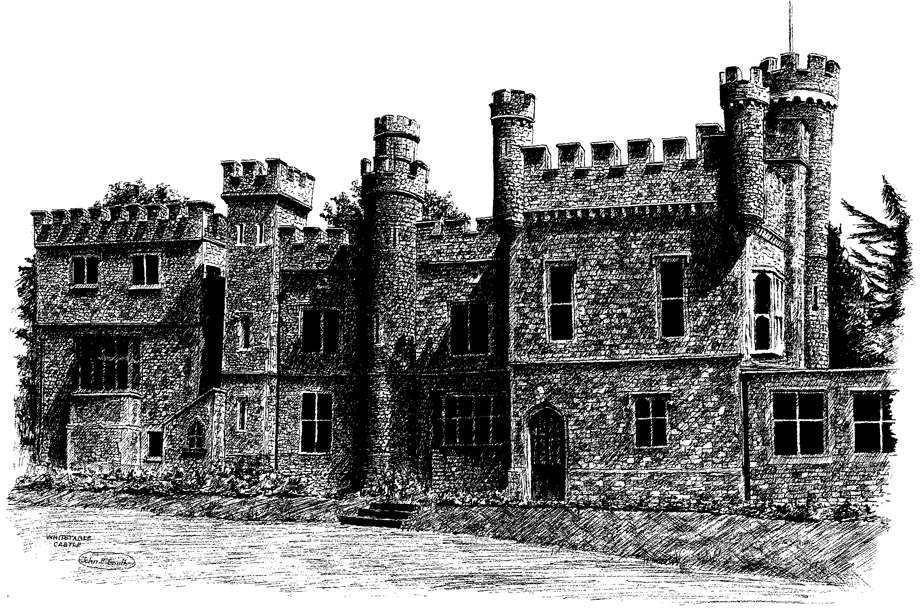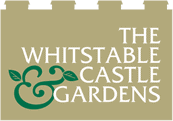History
Early Years (1400 - 1790)
In the 15th century there was a real need for alum, a mineral used mainly for fixing dyes in cloth so that colours did not run. Queen Elizabeth I gave a licence to search for deposits and a new site was found in the cliffs at Tankerton. The resulting product was called “copperas”. The first mine opened in 1588 and for 200 years the owners made a great deal of money from what was effectively one of the world’s first chemical industries. A copperas house was built on the site that is now the almshouse. Other smelting works were built where the bowling green is, and also by the Harbour and on the site of the Castle Tea Gardens, on Tower Hill.
Workers wore small metal masks which gave little protection from the terrible fumes. The pyrites were collected by the poor, left to decompose and processed by heating and cooling in huge vats. The resulting green vitriol crystallised to form copperas. The whole process was very hazardous, and a report in the “Kentish Gazette” of February 1788, describes how a worker slipped into a vat and died 26 hours later. As trade expanded, the Harbour grew in significance.
The First Manor House - The Pearson Years (1790 - 1835)
The first dwelling connected with the Copperas Works stood between where the Castle is now and the Bowling Green. The Manor of Tankerton was inherited by Elizabeth Radford of London, in 1773. She bought more land and works and in 1780 married a London businessman and Freeman of the Glovers Company, Charles Pearson. He bought several copperas works, but the industry was by now in decline. Pearson began demolishing the copperas works around 1790 and used the bricks to build an octagonal tower.
The black tar of the works can still be seen on the walls. The Pearson’s home was known as The Manor House and little is known about its layout except that in 1798 the chimney to the tower was taken down and a staircase put in its place. Pearson frequently rode on horseback to his London business, taking ten hours to reach Fleet Street.
By 1820 they had five children and were living in Greenwich, but every summer they travelled by Thames Hoy to Kent. Pearson planned an extension at the Tower to accommodate his large family. The family spent the summer of 1821 at the enlarged home, bringing maids and bedding down by Hoy as they did not own a carriage. The local copperas industry was by now finished, larger deposits having been found in Yorkshire. Charles Pearson now embarked on a new venture “The Canterbury and Whitstable Railway” to link Canterbury traders with the Harbour. A company was formed with Pearson as one of the owners and main investor together with notable pioneers of the railway age, including George Stephenson. The railway was planned to end on land Pearson owned to the east of the harbour where he built a station, but there was opposition to this and the line finished at the harbour instead. Pearson, always eager not to miss an opportunity turned his station into a hotel. This became the first “Pearson’s Arms”. The building of the railway ran into delays and financial difficulties.
Charles Pearson died in 1828, two years before the railway opened. His son Charles Pearson Junior, born in 1786, inherited the estate and carried on using the house as a summer residence .He married Eliza, daughter of the wealthy Lord Delaware, in 1810. The Tower fell into neglect and he sold it to his cousin by marriage Wynn Ellis.
Wynn Ellis (1835 - 1875)
Of all the various owners Wynn Ellis had the most significant impact and made the greatest contribution towards shaping the building and its grounds. Wynn Ellis was married to Mary Maria Pearson, a great niece of the elder Charles Pearson. Ellis was well educated, and had made his fortune in the silk business in London. He became well known as the Liberal MP for Hertford, a magistrate and public figure. His friend and greatest rival in Parliament was Robert Peel who became Prime Minister. Perhaps less praiseworthy was his double life, for while his wife remained in Hatfield or their London home, he also had a mistress, Susan Lloyd, for whom in 1836 he purchased what was by now known as Tankerton Tower. Susan Lloyd had a son about this time, who later became the Rev Arthur Graystone. She also had a daughter, Susan Alinda Lloyd. Wynn Ellis repaired the building, removed the ivy and laid foundations for a new West wing and Bell Tower furthest from the original tower. This was finished in 1840; by 1842 he had built North Lodge which stood where the front car park is and South Lodge which still exists behind the present toilet block. Another lodge was built at the main gateway, and this is now home to the Castle Preschool. The estate, including fields, cottages, gravel pits and beach extended from Bennells Avenue to Oxford Street at the other end of Whitstable. In the Grounds which extended down to the shore, there were stables, summerhouses, an ice house, vegetable and flower gardens as well as tennis and sports facilities.
Wynn Ellis bought several more properties for Susan Lloyd, so she was not always resident at Tankerton, leaving a housekeeper there. In 1850, Ellis leased the Pearson’s Arms for use as a Coastguard Station, purchased more land in the area and added a conservatory to the Tower. Wynn Ellis stayed at Tankerton Tower each summer and led a full social life. The Regatta was transferred to Tankerton Beach by his special permission and he entertained his titled friends, He retired in 1871, and his wife Mary Pearson died in 1872, leaving no children. Her remains were brought down from Hatfield to Whitstable. In 1873 Ellis demolished the Pearson’s Arms and built the Almshouses in memory of his wife setting up a charitable trust, which exists to this day.His pride and joy was an art collection at his Cadogan Square home. It contained works by Old Masters such as Canaletto, Raphael, Rubens and Rembrandt, along with best of contemporary art.Wynn Ellis died in London in November 1875. His body was brought to Whitstable by special train and met by notable people in the area including the Vicar, the Rev H Maugham. The funeral cortege was impressive, all the shops closed and the Rev Arthur Graystone helped to conduct the service. He was laid to rest in the imposing mausoleum built on land he had given to All Saints Church. This can still be seen on the south-west side of the churchyard.
The Wynn Ellis Legacy Years (1875 - 1890)
The Tankerton Estate was bequeathed to Susan Alinda Lloyd, his daughter by his mistress; she became the Lady of the Manor and held an annual Manorial Court until her death in 1884. The Ellis estate then passed to the Rev Graystone, who lived in Lancaster Gate. Large bequests were made to charity, the modern pictures were auctioned by Christie’s and the “Old Masters” left to the National Gallery, subject to being shown in special rooms. They accepted the best, but some pictures were found to be skilful copies.
The Rev Graystone died at the age of 50 in 1886, leaving a fortune of £4 million. He left two sons and the estate passed to the elder, Sydney Wynn Graystone. In 1890 he moved to Devon and the estate was sold on his behalf for £22,000 to a solicitor, Mr E Newton Robinson.
The Disaster Years (1890 - 1920)
Realising the potential of the developing resort of Tankerton, Mr E Newton Robinson formed a company called the Tankerton Bay Estate. A road was built through the grounds and building plots sold. However, the company soon ran into financial difficulties and the Tower and grounds were mortgaged. For several years the Tower was rented out. In 1897 Tankerton Castle, as it was now known, was sold to Thomas Adams. He added a billiard room to the North of the original tower. This provided a good room with feature fireplace on the ground floor with servants’ quarters upstairs but obstructed the fine sea views of Whitstable Bay. Later this became the Council Chamber. Following his death in 1902 his widow remarried and remained there until 1920.
The Mallandain Era (1920 - 1935)
In 1921 the Castle passed into the hands of Mr Albert Mallandain. A paper manufacturer, he and his wife used it as a summer residence. Changes were made in the building, with a fine new staircase and extensive additional oak panelling to match original designs. The Mallandains owned a Rolls Royce, but he often walked to the station in the morning.
Kate Anderson was a parlour maid at the Castle, having joined the staff in 1924. She described life at the elegantly furnished home as hard work, with one half-day off per week and wages of £2 per month. There were many stairs to run up and down, work started at 5.30am, and finished very late. A grandfather clock stood in the hallway, and the drawing room had a log fire which highlighted the tapestries on the panelling. The Mallandain’s bedroom was at the top of the Tower and this was where they would often be served breakfast. Kate had many happy memories of her time at the Castle and met her husband there. He was an ‘under gardener’.
Paddy Walker, who started as a gardener at the age of 19, had a busy life supplying fresh vegetables and fruit and tending the exotic plants in the conservatory. All this ended when the Mallandains retired to their home in Surrey.
Whitstable Council Offices (1935 - 1975)
The Whitstable Urban District Council, despite some some opposition, bought the Castle for the town in 1935 for £10,000. Paddy Walker lived over the Gate House and remained to look after the gardens. Many changes were made to the property. Concerts and dances were held on the site of the tennis courts. The bowling green was opened in 1936 and the gardens opened to the public in 1948. Paddy was interviewed by Richard Dimbleby, on the roof of the Tower, when the famous radio programme “Down Your Way” was broadcast from Whitstable.
Castle Centre Association (1975 - 2008)
Following the local government re-organisation in 1972, the Castle remained empty until 1975 when at the instigation of The Whitstable Society the “Castle Centre Association” was created with the aim of using The Castle for the benefit of the people of Whitstable. The Committee & Trustees were responsible for the interior decoration, furniture and ran the Castle successfully with no assistance from Canterbury City Council, which as landlord maintained the exterior of the building. In 2004 a new committee with its first Castle Co-ordinator began a complete interior upgrade and secured KCC ‘Approved Venue’ status for Weddings and Civil Ceremonies. This brought in much needed income to regenerate the Castle and enable it to return to its original role as a venue for family celebrations, major local events and community activities. A heritage Lottery Grant enabled a new Trust to be formed in 2008 to take over the running of the Castle and Gardens.

